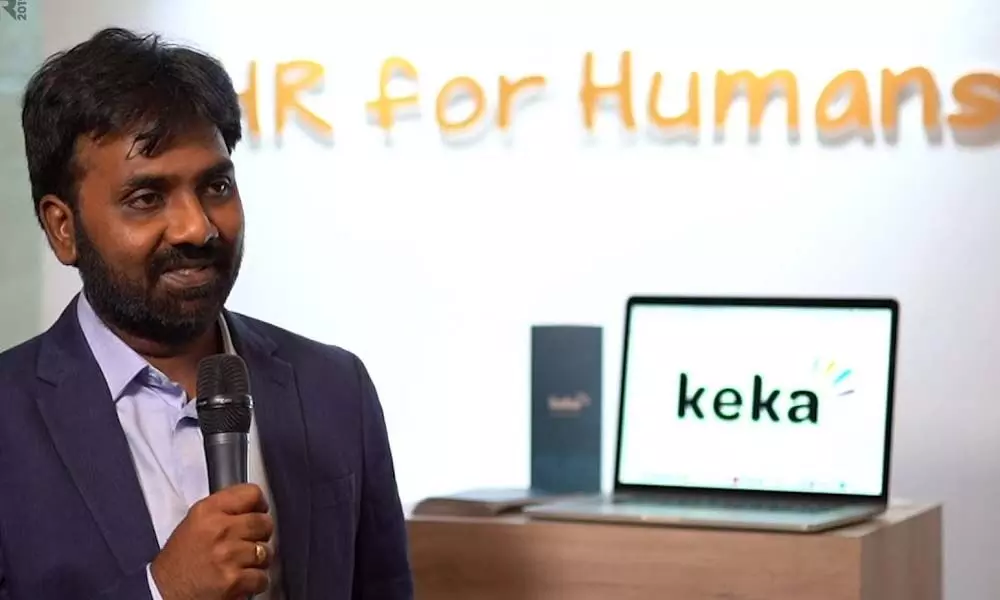Aiming to be a product-focused company than a sales-driven one: Keka HR CEO
The company plans to enter foreign markets like US and Europe in the next 6-9 months. It may also look at raising growth capital for scaling company’s operation abroad
image for illustrative purpose

What was the motivation behind launching 'Keka' given the intense competition in the human resources management system (HRMS) software solution space?
When we started, there were many HRMS (Human Resources Management System). What we felt that every product lacked the design thinking. We thought that was something that we could bring to the table to disrupt the market. And we are successful and it all worked out as planned. It definitely feels good.
How was the business during the pre-pandemic period? Has the business got impacted during the pandemic period?
From the date of announcement of lockdown last March, we saw a dip. During April, May and June, we saw a dip. The business in the travel industry got impacted a lot as many companies let go of their employees. If the number of employees goes down, our revenues also shrink because we charge per employee. So, our revenues went down in those three months. However, we thought we would focus on scaling the business because that will give us good growth when things would become better. Luckily for us, things started turning around from July. If we compare this June to where were in last June, we had seen 2.2 times growth. And it has been a sustained growth.
In SaaS (software as a service) model, when subscription goes down, revenues also come down. That has happened with 'Keka' during the first quarter of last financial year. What have you done to de-risk the business model?
One thing happened, companies have understood the importance of digital interfaces and adopted automation. From our side, we actually hired sales people just after the pandemic. Usually, people don't hire during a downturn but we went ahead and hired people. When the demand came back in September last year, this investment helped us to get more clients.
Hiring definitely has bounced back but is it at the pre-pandemic level? As a company that provides HRMS solution, what is your assessment in this respect?
In the travel sector, companies have been affected a lot. So, their hiring has not happened. Customers in this sector have asked for discounts during the pandemic. However, sectors like IT and technology have done well. Also, in sectors like manufacturing which has not done well, but has adopted our solution. Because even if they cut down employees these companies still need to pay salary to their employees. Therefore, the adoption level is good.
What is your exposure to the sectors that have been badly hit by the pandemic? Which is your biggest vertical as per revenue contribution?
Majority chunk of our revenue comes from services segment. IT & ITeS is the biggest vertical for us within the services segment that contributes around 50 per cent of total revenues. Around 25 per cent of our business comes from IT &ITeS vertical within the services segment. The rest 50 per cent comes from manufacturing, pharmaceuticals, banking & healthcare among others. IT & ITeS is the fastest growing vertical for us.
What are your global ambitions as most software product companies like you have gone global to drive growth?
Right from the day one, we wanted to be an international product. Our thought process is if we are able to build up a platform for India, that will be more or less suitable for the world because India has a wide set of customers. In design also, we have applied the international standards because we compete with the players in the international market. We also made sure that the product comes out to be the best in the world. We are planning to launch our product in six-nine months in the international market. We have a multi-pronged approach and our primary focus is on Middle East, Europe and the US.
What is your unit economics? Can you throw some light on this aspect?
There are two costs for us. First is the technology infrastructure cost and second is servicing the customer. For us, servicing the customer costs more than the tech cost. Both of these costs come around 35-38 per cent for us. The margin is reinvested in the product development. We become cash flow positive recently because entire margin is being invested in building the product. At the end the customer benefits because he is getting more features for the same subscription fee.
How is the adoption pace for your product among Indian businesses?
Today, we are thse leader in the SME space and ahead of all the funded competitors. Our new customer addition is growing at a higher pace than our nearest competitor (greytHR). We don't really compete in the enterprise customer space.
What are the reasons to remain boot-strapped despite a leadership position in the HRMS space?
One of the major challenges in the HRMS space is if you try to acquire too many customers without a good product, then you can never make a good product. Because product development is going to take time. If you take funding, then there can be tremendous sales pressure. We want to be a product-driven business. We invested in the product a lot to get it right and then we would scale. We have never invested in marketing and a lot of our clients came through word-of-mouth and referrals. Our immediate priority is to get the product fit for the markets abroad. Once we get that, we will raise only growth capital. So, we may look at it within one year.

